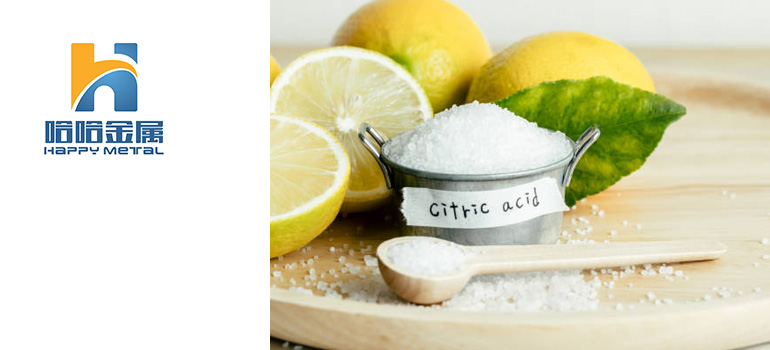Summary:
Unveiling the Surprising Benefits of Citric Acid in Food
The Role of Citric Acid in Enhancing Food Flavor
Citric Acid's Impact on Food Preservation and Shelf Life Extension
Health Benefits Associated with Citric Acid Consumption
Culinary Innovations: Creative Uses of Citric Acid in Food Preparation
Exploring the Environmental Impact of Citric Acid in Food Production
The Role of Citric Acid in Enhancing Food Flavor
Citric acid, often associated with the tangy taste of citrus fruits like lemons and oranges, plays a fascinating role in enhancing the flavor of various foods. It’s not just about adding a sour punch; citric acid brings a depth of taste and brightness that can transform a dish from ordinary to extraordinary.
Exploring the Chemistry Behind Flavor: At its core, citric acid is a weak organic acid found naturally in many fruits, particularly citrus fruits. When added to food, it interacts with other flavor compounds, enhancing and balancing their profiles. This interaction can heighten the perception of sweetness, counteract bitterness, and even add complexity to savory dishes.
Unlocking Culinary Applications: From refreshing beverages to savory sauces and marinades, citric acid finds its way into a wide array of culinary creations. Its ability to amplify flavors makes it a versatile ingredient in both sweet and savory recipes. Whether it’s a zesty salad dressing or a citrus-infused dessert, citric acid adds a bright and lively dimension to the dining experience.
Comparing Natural vs. Artificial Enhancers: One of the remarkable aspects of citric acid is its natural origin. Unlike some artificial flavor enhancers, citric acid provides a clean and authentic taste without any synthetic additives. This natural appeal aligns with the growing consumer preference for wholesome, minimally processed foods.
By understanding the chemistry behind citric acid’s flavor-enhancing properties and exploring its culinary applications, we can appreciate its role as a vital ingredient in elevating the taste of our favorite foods.
Citric Acid’s Impact on Food Preservation and Shelf Life Extension

Citric acid isn’t just about adding flavor; it also plays a crucial role in preserving the freshness of our favorite foods and extending their shelf life. It’s like a natural guardian, working behind the scenes to keep our meals tasting delicious and safe to eat for longer.
Preserving Freshness: Imagine biting into a juicy strawberry or enjoying a crisp salad. Citric acid helps maintain the vibrant colors and textures of fruits and vegetables by slowing down the oxidation process. This means fewer brown spots on your apple slices and crisper lettuce in your salad bowl.
Extending Shelf Life: Nobody likes to waste food, and citric acid can help reduce food waste by extending the shelf life of perishable items. Its antimicrobial properties inhibit the growth of mold, yeast, and bacteria that can cause food spoilage. So, that loaf of bread stays fresher, that jug of juice lasts longer, and those homemade preserves stay delicious for months.
A Safer Alternative: In a world where food safety is paramount, citric acid offers a natural and effective alternative to synthetic preservatives. It’s a reassuring thought knowing that the same ingredient found in lemons and limes is helping keep our packaged foods safe and fresh without the need for harsh chemicals.
By understanding how citric acid preserves freshness and extends shelf life, we can appreciate its role in ensuring that our favorite foods stay flavorful and wholesome for longer periods.
Health Benefits Associated with Citric Acid Consumption
Beyond its role in enhancing the taste of food, citric acid offers several health benefits that may surprise you. It’s not just about flavor; it’s also about nourishing our bodies and supporting overall well-being.
Supporting Digestive Health: Citric acid can aid in digestion by promoting the production of digestive enzymes in the stomach. These enzymes help break down food more efficiently, allowing our bodies to absorb essential nutrients better. So, that squeeze of lemon in your water or salad might be doing more than just adding flavor—it could be supporting your digestion too!
Harnessing Antioxidant Power: Citric acid is rich in antioxidants, compounds that help protect our cells from damage caused by harmful molecules called free radicals. By neutralizing free radicals, antioxidants may lower the risk of chronic diseases and promote overall health. So, savoring foods rich in citric acid, like citrus fruits and tomatoes, can be a tasty way to boost your antioxidant intake.
Promoting Bone Health: Believe it or not, citric acid may also play a role in supporting bone health. It helps our bodies absorb calcium, a vital mineral for building and maintaining strong bones. So, that glass of orange juice or sprinkle of lemon zest could be contributing to your daily calcium intake and keeping your bones strong and healthy.
By understanding the health benefits associated with citric acid consumption, we can appreciate how this natural ingredient not only enhances the flavor of our favorite foods but also supports our overall health and well-being.
Culinary Innovations: Creative Uses of Citric Acid in Food Preparation
Let’s dive into the exciting world of culinary creativity and explore the many ways chefs and home cooks alike are harnessing the power of citric acid to elevate their dishes to new heights. It’s not just about following recipes; it’s about unleashing your imagination and experimenting with flavors in the kitchen.
Beyond Beverages: While citric acid is commonly associated with beverages like lemonade and margaritas, its uses extend far beyond the bar. From tangy salad dressings to savory marinades, citric acid adds a delightful zing to a wide range of culinary creations. So, next time you’re whipping up a meal, don’t forget to reach for that bottle of lemon juice or citrus zest—it might just be the secret ingredient that takes your dish from good to great.
Baking Brilliance: In the world of baking, citric acid can work wonders by enhancing the flavor and texture of baked goods. A pinch of citric acid in your cookie dough can add a subtle tartness that balances the sweetness of the sugar, while a sprinkle of lemon zest in your cake batter can infuse it with a bright and citrusy aroma. So, whether you’re making cookies, cakes, or bread, don’t be afraid to get creative with citric acid—it’s the baker’s best-kept secret!
Citric Acid Infusions: One of the most exciting trends in modern cuisine is the art of flavor infusion, and citric acid is leading the charge. From citrus-infused oils and vinegars to tangy fruit syrups and sauces, chefs are finding innovative ways to incorporate citric acid into their culinary creations. So, why not try your hand at making your own citrus-infused delicacies at home? With a bit of experimentation and a dash of creativity, the possibilities are endless.
Exploring the Environmental Impact of Citric Acid in Food Production
Absolutely, let’s delve into the fascinating realm of how citric acid is reshaping our understanding of sustainability in the food industry. It’s not just about what’s on our plates; it’s about the impact our food choices have on the planet we call home.
Environmental Responsibility: Citric acid isn’t just a flavor enhancer; it’s a game-changer in terms of environmental responsibility. By opting for citric acid in food production, we’re taking a step towards a greener future. Its natural origins and biodegradable nature make it a more sustainable choice compared to synthetic additives. So, every time we choose products with citric acid, we’re voting for a healthier planet.
Supporting Ethical Practices: Behind every drop of citric acid lies a story of ethical sourcing and responsible production. Companies are increasingly prioritizing sustainable practices, from supporting local farmers to implementing eco-friendly production methods. By supporting brands that prioritize ethical sourcing of citric acid, we’re contributing to a more equitable and sustainable food system.
Reducing Environmental Footprint: The impact of citric acid goes beyond its role in food; it’s also driving innovations in packaging. Biodegradable and compostable packaging materials made with citric acid are emerging as alternatives to traditional plastics. By embracing these eco-friendly options, we’re reducing our reliance on fossil fuels and minimizing plastic pollution, one package at a time.
Empowering Consumer Choices: As consumers, we hold the power to drive change through our purchasing decisions. By choosing products with citric acid and other sustainable ingredients, we’re sending a message to companies that we value environmental stewardship. Together, we can create a demand for products that prioritize both taste and sustainability, paving the way for a brighter, greener future.
By exploring the environmental impact of citric acid in food production, we’re not just making informed choices; we’re actively shaping a more sustainable food landscape for future generations. Let’s continue to champion sustainability in every bite we take.




